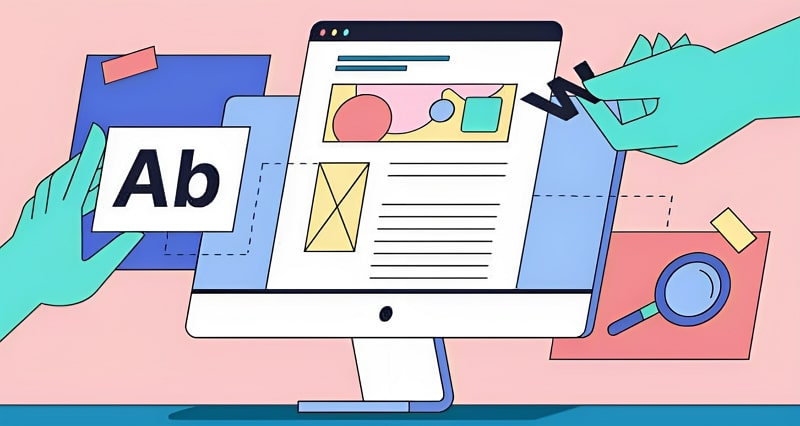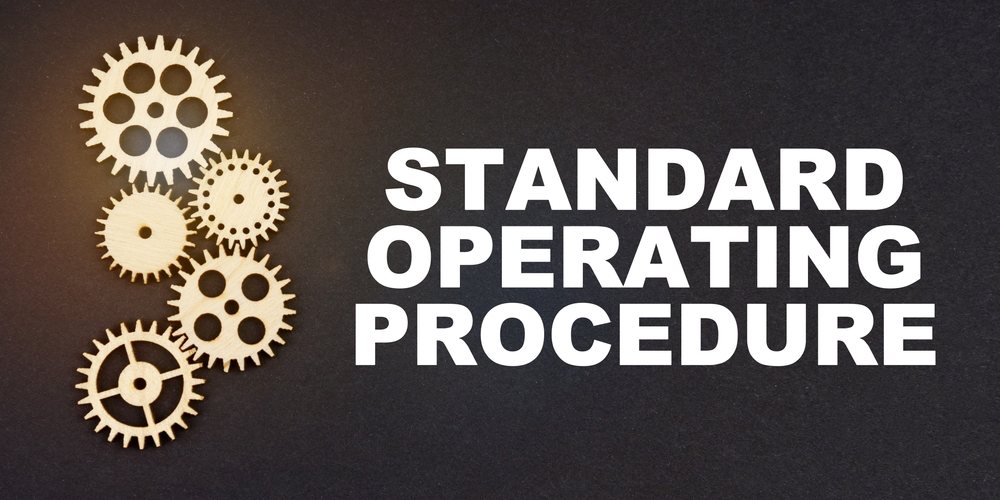If you want to improve your team’s workflow, you can opt to implement standard operating procedures (SOPs). These SOPs help businesses create policies and different strategies so that you can achieve your goals. Therefore, utilizing standard operating procedure examples in the company can streamline workflow. In this article, we’ll go through some examples of standard operating procedures in detail.
Why are Standard Operating Procedures Important?
Businesses that utilize SOPs grow as they keep everything in order and organized. These standard operating procedures improve the overall workflow and eliminate disorganization in the company. In the following section, we have provided you with what companies can gain from SOP standard operating procedure samples.
- Maintain Consistent Workflow: SOPs ensure that every component and task in your company is organized. Therefore, it maintains consistency throughout the whole operating process.
- Produce Sufficient Results: If your company maintains a consistent workflow, it can easily market its brand to others. As we know, following these SOPs can produce sufficient results for the company.
- Reduce Misunderstandings: When you have every task planned out, and your team is provided with detailed instructions, it leaves no room for errors or misunderstandings.
- Advance Onboarding Process: These SOPs are helpful when you board new recruits by providing proper guidance. Furthermore, the employees would have a clear understanding of their role.
- Increase Security Measures: You can use SOPs to prevent any disaster in your company as they give you detailed instructions on how to handle situations like these.
10 Best Standard Operating Procedures Examples
We know the importance of standard operating procedures (SOPs) and their benefits. Now, let’s look at the following top 10 examples of SOP standard operating procedure.
Example 1: Hiring and Recruitment SOPs

Hiring and recruitment are examples of standard operating procedures that can help the HR department recruit new employees efficiently. So, you can follow this standard operating procedure sample as your hiring guide.
Purpose
The hiring and recruitment SOP establishes a structured and transparent process for hiring top talent to ensure alignment with organizational goals. Additionally, the purpose is to streamline the hiring process from requisition to onboarding.
Application
This SOP example is utilized by HR professionals and hiring managers who are involved in the recruitment process.
Procedural Steps
- Define the needs, responsibilities, and qualifications for the position.
- Then, review the employees’ applications against predefined criteria.
- Now, conduct structured interviews to assess skills and qualifications.
- Verify candidate credentials and their past performances.
- In the end, facilitate a smooth onboarding process for the new hire via email.
Resources
You need to attach the following documents as an SOP standard operating procedure sample.
- Sample Skill Tests
- Interview Questions
- List of Required Documents from Employees
Example 2: Sales Prospecting SOPs
Businesses are always in need of new clients, so you can use the sales prospecting SOP to acquire new clients. Moreover, you can also follow this standard operating procedure example for reference.
Purpose
The sales prospecting SOP aims to provide a tactical approach to acquiring new sales clients and professionals. In addition to that, the main purpose is to maximize conversion leads while maintaining a positive client experience.
Application
This SOP is used by the sales development team that is involved in client acquisition. Other than that, it is also applicable across industries and various sectors in a company.
Procedural Steps
- Start by identifying potential clients based on target criteria.
- Then, initiate outreach through various channels, such as email and calls.
- Understand client requirements through effective communication and analysis.
- After that, develop and present proposals that address your client’s needs.
- Negotiate through the terms, pricing, and details to reach a mutual agreement.
- Finally, qualify potential prospects based on campaign results.
Resources
The development team can use this standard operating procedure sample and attach the following documents.
- List of Potential Clients
- Export LinkedIn Contacts
- Email Templates Ideas
Example 3: Blog Publishing SOPs

Another example of standard operating procedures is the blog publishing SOPs that companies can utilize to create high-quality blog content.
Purpose
The blog publishing SOP aims to streamline the process of creating and publishing engaging and consistent content on our digital platform. In addition, it ensures that all team members follow a standardized approach to maintain quality and timely delivery of blog posts.
Application
The provided SOP is valid to content creators, editors, and anyone involved in the blog publication process. Additionally, it is designed to enhance efficiency, collaboration, and adherence to content guidelines.
Procedure Steps
- First, develop well-researched and engaging content aligned with the target audience.
- Thoroughly review content for grammar, style, and accuracy.
- Then, integrate relevant keywords and metadata for search engine optimization.
- Afterward, include images, videos, and other multimedia assets as per content requirements.
- Submit content for review and obtain necessary approvals.
- Finally, use designated platforms to publish content, ensuring proper categorization and tagging.
Resources
In addition to that, you can attach the following resources to this standard operating procedure sample.
- Blog Post Samples
- Social Media Strategies
- Editing Guidelines
Example 4: Data Backup and Recovery SOPs
Your company must have a backup and recovery system to ensure that none of the critical information is lost. Therefore, utilize this SOP standard operating procedure example as your guide.
Purpose
The data backup and recovery SOP makes sure that the company’s vital data is properly secure. Moreover, the primary purpose of this standard operating procedure example is to safeguard critical information and minimize downtime.
Application
This SOP can be used by the IT department team that is responsible for maintaining organizational data. You can also use it across industries where data reliability is paramount.
Procedural Steps
- First, categorize the critical data based that require backup.
- Afterward, store backups in a secure and accessible location.
- Implement security encryption measures from unauthorized use.
- Other than that, regularly test the restoration process to verify data integrity.
- Develop a plan that outlines specific steps to recover data in case of a system failure.
- Moreover, maintain a detailed documentation of the backup processes and recovery procedures.
Resources
Companies need to attach the following documents in this standard operating procedure sample.
- A Backup Procedure
- Central Backup System
- Past Documentation Records
Example 5: Document Management and Control SOPs
Document management is essential for a business, as an outdated product description can be its downfall. That is why companies can implement this example of standard operating procedures.
Purpose
The Document Management and Control SOP uses a systematic approach that secures the creation and distribution of organizational documents. Furthermore, the primary purpose is to ensure that the document maintains consistency and accuracy. The documents should meet the regulatory standards so that there is no risk of unauthorized access.
Application
Company managers can use this SOP to provide a standardized process for managing documents. This can include policies, procedures, and manuals. Other than that, organizations must enhance their product’s efficiency.
Procedural Steps
- Start by making a draft document according to the standards.
- Then, approve the documentation process with relevant stakeholders.
- Implement a system to keep track of document revisions.
- Moreover, distribute the approved documents to their relevant departments.
- Execute security measures to control document access and prevent unauthorized access.
- In the end, establish a system that efficiently retrieves documents.
Resources
This SOP standard operating procedure sample guides businesses on what documents need to be attached.
- Regularity Documentation
- Controlled Procedural Guide
- Document Approval Set
Example 6: Customer Service Satisfaction SOPs

The following SOP standard operating procedure example provides you with a step-by-step guide on how to resolve customer’s demands.
Purpose
The Customer Service Satisfaction SOP ensures that customers are provided with consistent and high-quality services. Additionally, the primary purpose is to satisfy the customers by providing them with relevant information. This improves customer loyalty and provides them with proper solutions for their concerns.
Application
This example of a standard operating procedure is used by service operators and managers. They also ensure to focus on continuous improvement to satisfy customer needs.
Procedural Steps
- Read the customer’s demands and create a log.
- Then, develop a systematic approach to address customer issues within 24 hours.
- In addition to that, collect customer feedback through surveys or direct communication.
- Regularly analyze feedback to identify strengths and areas for improvement.
- Furthermore, conduct training programs to enhance customer service skills.
- By the end, implement changes to improve overall customer satisfaction.
Resources
The service department team can attach the following documents by using this SOP standard operating procedure sample.
- Incident Report Instruction
- Customer Reporting Procedures
- Email Response Templates
Example 7: Health and Safety Protocols SOPs
Companies should heavily focus on health and safety protocols for their employees in case of an emergency. Therefore, follow this SOP standard operating procedure example as a precautionary measure.
Purpose
The Health and Safety Protocols SOP is utilized to maintain a safe working environment for employees. In addition to that, you can prevent accidents and ensure employee’s health with safety regulations. The purpose of these SOPs is to protect their employees.
Application
The management team can use this SOP to provide precautionary measures against any hazardous situation. It includes a comprehensive outline for identifying potential health and safety risk factors.
Procedural Steps
- Identify any potential hazards or risks through thorough workplace assessments.
- After that, establish comprehensive health and safety protocols for employees.
- Conduct regular sessions to ensure all employees are informed about these protocols.
- Now, implement a system for reporting accidents and incidents promptly.
- Regularly review and update these protocols with changing regulations.
Resources
The following documents should be added by learning from these SOP standard operating procedure samples.
- Safety Precaution Guidelines
- Accident Procedures
- Update Regulation
Example 8: Inspection and Maintenance SOPs
Every business should maintain and inspect its office equipment regularly to eliminate the risk of downtime. In addition to that, follow along with the given SOP standard operating procedure example.
Purpose
The inspection and maintenance SOP outlines the systematic procedures for the maintenance of equipment. Moreover, the procedure includes equipment upkeep by promoting reliability and efficiency. The main goal is to prevent breakdowns and enhance safety for the employees.
Application
Facility managers are responsible for the upkeep of company assets by utilizing this SOP. Additionally, these teams should do regular inspections and maintain efficiency.
Procedural Steps
- Schedule a regular, systematic inspection of equipment based on guidelines and usage.
- Now, establish a detailed checklist for each inspection and cover every safety feature.
- Use standardized forms to document any inspection findings and note any issues.
- Address these issues based on severity and urgency for timely resolution.
- After that, maintain a logbook outlining replaced items and complete maintenance tasks.
- Review these notes regularly and conduct an annual evaluation.
Resources
You need to attach the following documents to your SOP standard operating procedure samples.
- Equipment Logbook
- Inspectional Documents
- Maintenance Procedure
Example 9: Social Media Management SOPs

Social media is used as a marketing strategy by businesses to maintain an image of their company. However, if you want to understand this standard operating procedure example in detail, read the following.
Purpose
The social media management SOP utilizes this marketing approach for planning and executing social media activities. The main goal is to enhance brand awareness, customer engagement, and consistency across various social platforms.
Application
Social media managers and creators use this SOP to maintain a compelling brand presence online. Moreover, the company also makes a significant impact online among its audience.
Procedural Steps
- Develop a campaign objective to brand your message by making a content calendar.
- After that, identify different famous social media platforms based on your targeted audience.
- Generate engaging and visually appealing content according to platform-specific guidelines.
- Utilize various scheduling tools to optimize posting times.
- Moreover, respond promptly to comments to interact with your audience.
- Regularly analyze your social media statistics to assess performance.
Resources
This standard operating procedure sample requires the following documents.
- Marketing Content Calendar
- Social Media Guidelines
- Social Media Templates
Example 10: Employee Software Training SOPs
In the last SOP standard operating procedure example, whenever new technology is introduced, employees need specific training for it. Therefore, the following standard operating procedure sample will guide you through it.
Purpose
The Employee Software Training SOP provides employees with proper sessions to ensure they quickly understand the new software. Moreover, they can navigate through the software and ensure seamless integration into daily workflows. Thus, it boosts the operational efficiency and reduces the chances of errors.
Application
It is the job of the IT departments and HR managers to introduce employees to the software application. In addition to that, having this knowledge is essential as every business needs to keep up with the current technological advancements.
Procedural Steps
- To start off, identify the basic software training needs based on organizational requirements.
- Then, create a structured training session that focuses on learning objectives and assessments.
- Make separate environments such as in-person, virtual, and self-paced training sessions.
- Furthermore, incorporate practical exercises and examples to support learning in employees.
- Evaluate employee’s progress and proficiency upon successful training completion.
- Lastly, collect their feedback to refine training materials for the future.
Resources
Business companies need to attach the documents given below in this SOP standard operating procedure sample.
- Software Usage Instructional Manual
- Training Documents
- Employee Progress Report
Pick Up Docuo to Create a Standard Operating Procedure
You might have gotten a better understanding of the SOPs from the above standard operating procedures examples. It is time to consider which tool can create excellent SOPs for your company. The answer is Docuo, which effortlessly helps you create technical yet comprehensive documentation. Furthermore, Docuo provides effective documentation tools that enhance your team’s knowledge.

Additionally, it also centralizes your documents and enables seamless version control. You can also keep track of changes and maintain your previous records using this efficient online tool. Plus, your team can also collaborate to co-create stellar documentation.
Key Features
- Simplify Product Descriptions Using Code With AI
- Docuo AI Copilot Automates The Documentation Process
- Generate A Directory to Structure Your Documents
- Access Control Secures Your Documents from Unauthorized Access
- Showcase Your Brand Through the SEO Optimization Feature
You may also like: Top 10 Document Collaboration Software


